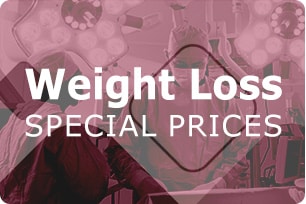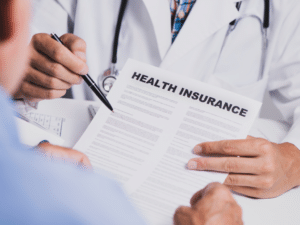A hernia occurs when an organ or tissue pushes through a weak spot in the muscle or connective tissue that holds it in place. It’s a condition that affects millions of people worldwide, and while some hernias may cause minimal discomfort, others can lead to serious, life-threatening complications if left untreated. This blog will discuss the risks of not seeking treatment for an untreated hernia, the different types of hernias, the symptoms to look out for, and the potential complications that can arise if medical intervention is delayed.
What is an Untreated Hernia?
An untreated hernia occurs when the condition is not addressed or treated properly, allowing it to worsen over time. Hernias can be either reducible or incarcerated, with some becoming strangulated if left untreated. In a reducible hernia, the organ or tissue can be pushed back into its proper place manually, but in an incarcerated or strangulated hernia, the herniated tissue becomes trapped, causing severe pain and other complications.
Hernias do not heal on their own. Without treatment, a hernia can grow larger, leading to more severe symptoms, and in some cases, it may result in permanent damage to the affected tissue. Timely intervention and surgical repair can prevent the hernia from progressing to a point where it causes life-threatening complications.
Symptoms of a Hernia
Recognizing the symptoms of a hernia early is crucial in preventing complications. The symptoms can vary depending on the type and location of the hernia, but common signs include:
1. A Visible Bulge or Lump
The most noticeable symptom of a hernia is often a visible bulge or lump in the affected area. This bulge may become more apparent when you stand up, cough, or strain. It may also disappear when lying down.
- Inguinal Hernia: Often presents as a bulge in the groin area.
- Umbilical Hernia: Appears around the belly button.
- Hiatal Hernia: May not be visible, but it can cause symptoms of acid reflux.
2. Pain or Discomfort
Pain or discomfort around the hernia site is another common symptom. The pain may vary from mild to severe and often worsens when engaging in physical activities such as lifting heavy objects, coughing, or even standing for long periods.
- Sharp or Aching Pain: The pain may feel like a dull ache or sharp pain that intensifies with pressure.
- Discomfort with Movement: The hernia may cause discomfort, especially when moving or exercising.
3. Nausea and Vomiting
In more severe cases, such as when a hernia becomes incarcerated or strangulated, you may experience nausea and vomiting. This is usually associated with a bowel obstruction and indicates that immediate medical attention is needed.
4. Difficulty Swallowing (Hiatal Hernia)
A hiatal hernia, which occurs when part of the stomach pushes through the diaphragm into the chest, may cause difficulty swallowing (dysphagia) or a sensation of food being stuck in the chest.
5. Constipation and Bowel Obstruction
If a hernia causes a bowel obstruction, you may experience constipation, bloating, and difficulty passing stool. This is more common in inguinal or femoral hernias.
6. Fever and Redness (Signs of Infection)
If the hernia becomes infected, you may develop a fever, redness, and swelling at the hernia site. This is a sign that the condition is worsening and requires immediate medical attention.
If you notice any of these symptoms, it’s essential to consult with a healthcare provider for diagnosis and treatment. Early detection of a hernia can prevent it from progressing to more severe complications.
Types of Hernias and Their Risks
Several types of hernias can occur in different areas of the body. Below are some of the most common types of hernias and the risks associated with them if left untreated.
1. Inguinal Hernia (Groin Hernia)
Inguinal hernias are one of the most common types of hernias, typically affecting men. This type of hernia occurs in the groin area, where a portion of the intestine or fat pushes through a weak spot in the abdominal wall.
Risks of Untreated Inguinal Hernia:
- Strangulation: If the hernia becomes incarcerated, the blood supply to the trapped tissue can be cut off, leading to strangulation. This can result in tissue death, infection, and even sepsis if not treated immediately.
- Pain and Discomfort: Over time, the hernia can grow larger, causing increasing pain, discomfort, and limited mobility.
2. Femoral Hernia
Femoral hernias occur when tissue or part of the intestine bulges through a weakness in the femoral canal, which is located near the upper thigh. This type of hernia is more common in women.
Risks of Untreated Femoral Hernia:
- Incarceration and Strangulation: Similar to inguinal hernias, femoral hernias can become incarcerated, causing severe pain and the risk of strangulation, which requires emergency surgery.
- Difficulty with Movement: The location of femoral hernias can make movement and physical activities more difficult and painful.
3. Incisional Hernia
An incisional hernia occurs at the site of a previous surgical incision. After surgery, the muscles and tissues in the abdominal wall may not fully heal, leading to a bulge where the incision was made.
Risks of Untreated Incisional Hernia:
- Recurrence of Hernia: An untreated incisional hernia can grow larger over time, increasing the risk of more serious complications.
- Infection: The weakened area around the surgical site can become infected, especially if the hernia causes a buildup of pressure and tissue damage.
4. Epigastric Hernia
Epigastric hernias occur in the upper part of the abdomen, often between the belly button and the chest. This type of hernia typically involves fatty tissue protruding through the abdominal wall.
Risks of Untreated Epigastric Hernia:
- Discomfort and Pain: Epigastric hernias can cause persistent pain or discomfort, especially after physical activity.
- Progression of Symptoms: Over time, these hernias can grow in size, leading to more severe pain and requiring more invasive treatment.
5. Hiatal Hernia
A hiatal hernia occurs when part of the stomach pushes through the diaphragm into the chest cavity. This type of hernia is often associated with acid reflux or gastroesophageal reflux disease (GERD).
Risks of Untreated Hiatal Hernia:
- Gastroesophageal Reflux Disease (GERD): If left untreated, a hiatal hernia can worsen GERD symptoms, leading to chronic heartburn, difficulty swallowing, and potential damage to the esophagus.
- Strangulation of the Stomach: In rare cases, a hiatal hernia can become strangulated, causing serious complications that may require emergency surgery.
6. Lumbar Hernia
A lumbar hernia occurs in the lower back and is often caused by a weakness in the muscle walls. These hernias are quite rare but can cause significant discomfort.
Risks of Untreated Lumbar Hernia:
- Chronic Pain: Without treatment, lumbar hernias can lead to chronic back pain and discomfort.
- Tissue Damage: Over time, untreated lumbar hernias may cause muscle or nerve damage in the lower back.
7. Obturator Hernia
Obturator hernias are rare but can be serious. They occur when part of the intestine pushes through the obturator foramen, a hole in the pelvic bone. This type of hernia is more common in women.
Risks of Untreated Obturator Hernia:
- Incarceration: Obturator hernias can become incarcerated, leading to severe pain, nausea, and vomiting.
- Bowel Obstruction: If left untreated, the hernia can cause a bowel obstruction, which can lead to more severe symptoms and require urgent surgery.
The Risks of Untreated Hernia: What You Need to Know
The primary risks of leaving a hernia untreated are related to the potential for complications that can arise over time. Some of the most concerning risks of untreated hernias include:
1. Incarceration
An incarcerated hernia occurs when the tissue that has protruded through the muscle wall becomes trapped. This condition can lead to swelling, pain, and difficulty reducing the hernia manually. Incarcerated hernias require prompt medical attention to prevent further complications.
2. Strangulation
Strangulation is one of the most serious complications of an untreated hernia. This occurs when the blood supply to the trapped tissue is cut off, leading to tissue death. Strangulated hernias are a medical emergency and require immediate surgical intervention to avoid severe health consequences, including sepsis or organ failure.
3. Infection
An untreated hernia can become infected, especially if there is a buildup of fluid or pus in the area. Infections can lead to fever, increased pain, and swelling, requiring antibiotic treatment or even surgery to clean the area.
4. Bowel Obstruction
In certain cases, an untreated hernia can cause a bowel obstruction, which occurs when the intestines become blocked. This can lead to nausea, vomiting, and abdominal pain. If left untreated, bowel obstructions can cause life-threatening complications, including the risk of sepsis.
5. Progressive Pain and Discomfort
Over time, untreated hernias can cause increasing pain and discomfort, especially with physical activity or movement. The hernia may grow in size, putting additional pressure on surrounding tissues and causing further complications.
How is a Hernia Diagnosed?
Hernias are typically diagnosed through a simple physical exam, which can often be enough depending on the type and severity. During the examination, your healthcare provider may be able to observe or palpate the hernia, or it may become more noticeable when you cough, change positions, or strain. In some cases, your provider will check if they can manually reduce the hernia, meaning they attempt to push the protruding tissue back into place. This helps determine the seriousness of the hernia. For some types, a physical exam may not be sufficient, and additional diagnostic tools such as a CT scan or other forms of soft tissue imaging may be required for confirmation.
Management and Treatment of Hernias
The treatment for a hernia depends on its type and severity. Common options include:
- Laparoscopic Inguinal Hernia Repair: A minimally invasive surgery using small incisions and a camera, offering quicker recovery and less pain.
- Laparoscopic Ventral Hernia Repair: Another minimally invasive procedure for ventral hernias, reducing risks and speeding up recovery.
- Open Hernia Repair Surgery: Traditional surgery for larger or more complex hernias, offering direct access but with a longer recovery.
- Hernia Repair with Mesh: A method where mesh reinforces the tissue, preventing recurrence of the hernia.
- Nissen Fundoplication (Hiatal Hernia): A procedure to treat acid reflux caused by a hiatal hernia by wrapping the stomach around the esophagus.
- Umbilical Hernia Repair (for Infants): If the hernia doesn’t resolve on its own, surgery is performed to close it.
Each treatment aims to prevent complications like incarceration or strangulation, ensuring better long-term health.
When to Seek Treatment for a Hernia
Seeking timely treatment for a hernia is crucial to prevent complications. If you notice any of the following symptoms, it is important to consult with a healthcare provider:
- Persistent or increasing pain in the area of the hernia.
- Difficulty pushing the hernia back into place.
- Swelling or redness around the hernia.
- Nausea, vomiting, or constipation.
- Fever or chills.
Early intervention can prevent a hernia from progressing into a more serious condition and help avoid the need for more invasive treatment.
Conclusion: Why Timely Treatment is Essential for Hernias
Untreated hernias can lead to a range of serious complications, including incarceration, strangulation, infection, and bowel obstruction. Seeking prompt treatment can prevent these risks and improve the overall outcome for individuals with hernias. Whether through laparoscopic surgery, traditional repair, or other methods, timely intervention is crucial for managing hernias effectively and avoiding life-threatening complications.
If you suspect you have a hernia, it is important to consult with a healthcare provider to discuss your symptoms and determine the best treatment option.










